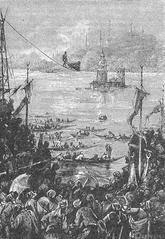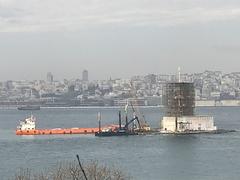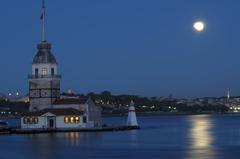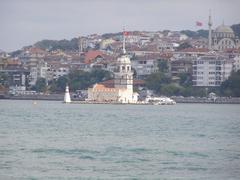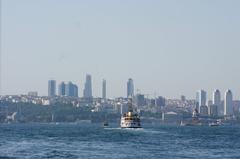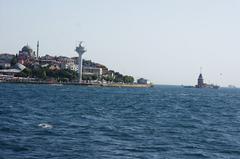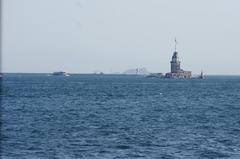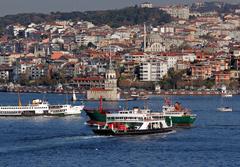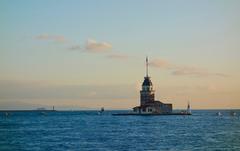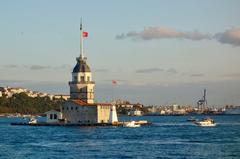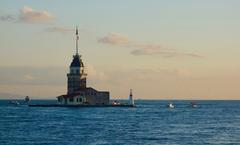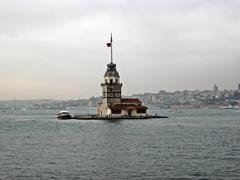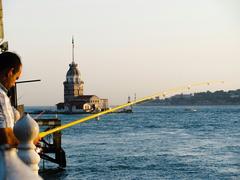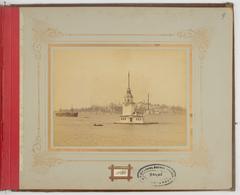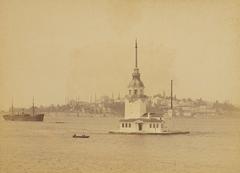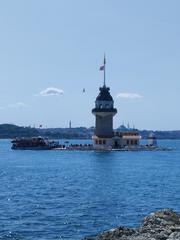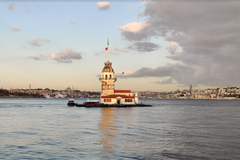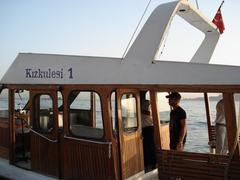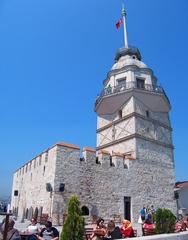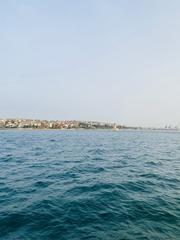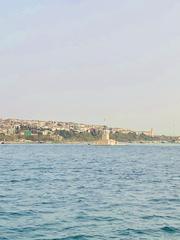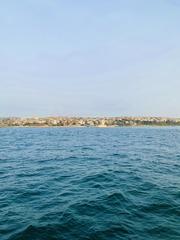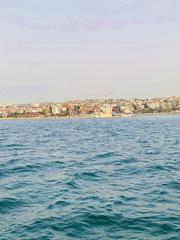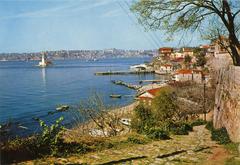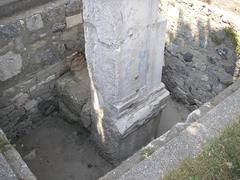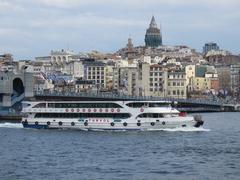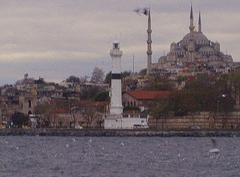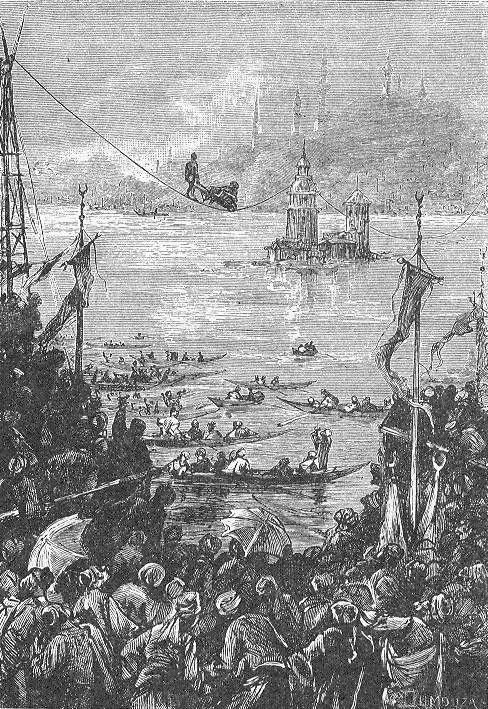
Visiting Kız Kulesi: History, Tickets, and Travel Tips
Date: 17/07/2024
Introduction
Nestled at the confluence of the Bosphorus Strait and the Sea of Marmara, Kız Kulesi, or the Maiden’s Tower, stands as an enduring symbol of Istanbul’s rich and diverse history. From its origins as a modest customs checkpoint in the 5th century BC to its current status as a beloved cultural icon, the tower’s story is a microcosm of the city’s journey through time. Originally erected by the Athenian general Alcibiades in 408 BC, the tower has witnessed the rise and fall of empires, from the Romans and Byzantines to the Ottomans, each leaving an indelible mark on its structure and significance (A Journey Through Time).
The Maiden’s Tower is not only a historical monument but also a repository of legends and folklore, such as the tragic tale of the Byzantine princess who succumbed to a prophecy of a fatal snakebite. These stories, passed down through generations, add layers of mystique and romance to the tower’s already captivating allure (Legends, Visiting Hours, and Ticket Information). Today, Kız Kulesi attracts visitors from around the globe, eager to explore its chambers, enjoy its panoramic views, and immerse themselves in its storied past (Essential Information for Travelers).
Table of Contents
- [A Journey Through Time - Visiting Hours, Tickets, and History of Kız Kulesi](#a-journey-through-time---visiting-hours-tickets-and-history-of-kız-kulesia-journey-through-time---visiting-hours-tickets-and-history-of-kız-kulesi)
- [Ancient Origins and Shifting Sands of Time](#ancient-origins-and-shifting-sands-of-timeancient-origins-and-shifting-sands-of-time)
- [Byzantine Era - A Beacon of Defense and Tragedy](#byzantine-era---a-beacon-of-defense-and-tragedybyzantine-era---a-beacon-of-defense-and-tragedy)
- [Ottoman Reign - From Watchtower to Lighthouse](#ottoman-reign---from-watchtower-to-lighthouseottoman-reign---from-watchtower-to-lighthouse)
- [Modern Times - A Cultural Icon Reborn](#modern-times---a-cultural-icon-rebornmodern-times---a-cultural-icon-reborn)
- [Visitor Information](#visitor-informationvisitor-information)
- [Travel Tips](#travel-tipstravel-tips)
- [Nearby Attractions](#nearby-attractionsnearby-attractions)
- [Accessibility](#accessibilityaccessibility)
- [Special Events](#special-eventsspecial-events)
- [Photographic Spots](#photographic-spotsphotographic-spots)
- [FAQ](#faqfaq)
- [Visit and Stay Up to Date](#visit-and-stay-up-to-datevisit-and-stay-up-to-date)
A Journey Through Time - Visiting Hours, Tickets, and History of Kız Kulesi
Standing sentinel at the confluence of the Bosphorus Strait and the Sea of Marmara, the Maiden’s Tower (Kız Kulesi in Turkish) is more than just an iconic silhouette on Istanbul’s skyline. It’s a time capsule, whispering tales of empires, legends, and enduring human spirit. Its history, as layered and intricate as the city itself, stretches back millennia, captivating hearts and sparking imaginations for centuries.
Ancient Origins and Shifting Sands of Time
The earliest whispers of the Maiden’s Tower’s existence date back to the 5th century BC. While its exact origins remain shrouded in the mists of time, historians believe it was first erected by the Athenian general Alcibiades in 408 BC. This initial structure, a modest customs checkpoint and defense post, marked the beginning of the islet’s long and storied journey.
Following the Athenian era, the islet and its structure witnessed the rise and fall of empires. The Roman Empire, inheriting the strategic outpost, fortified it further, laying the groundwork for the tower’s future incarnations. With the transfer of the Roman capital to Constantinople (present-day Istanbul) in 330 AD, the tower’s importance grew. It became a vital link in the city’s defensive chain, guarding the entrance to the Golden Horn and protecting the burgeoning metropolis from maritime threats.
Byzantine Era - A Beacon of Defense and Tragedy
The Byzantine Empire, inheriting the legacy of Rome, further shaped the tower’s destiny. Emperor Constantine I, recognizing its strategic significance, reinforced the structure, transforming it into a formidable fortress. Over the centuries, the tower witnessed numerous conflicts, standing as a steadfast guardian against invading forces.
One of the most poignant chapters in the tower’s history unfolded during the Latin occupation of Constantinople (1204-1261). Legend has it that a Byzantine princess took refuge in the tower to escape a prophecy foretelling her death from a snakebite. However, fate proved a cunning adversary, as a basket of figs, sent as a gift, concealed a venomous serpent within its depths. The princess, tragically fulfilling the prophecy, succumbed to the snake’s bite, forever etching her story into the tower’s lore.
Ottoman Reign - From Watchtower to Lighthouse
The conquest of Constantinople by the Ottoman Sultan Mehmed II in 1453 ushered in a new era for the Maiden’s Tower. While the Ottomans initially used it as a watchtower, its role gradually shifted. During the reign of Sultan Suleiman the Magnificent, the tower underwent significant renovations, transforming into a lighthouse guiding ships through the treacherous currents of the Bosphorus.
The Ottomans, recognizing the tower’s romantic allure, also wove it into their cultural tapestry. It became a popular subject for poets and artists, its image gracing miniature paintings and inspiring verses that celebrated its beauty and mystique.
Modern Times - A Cultural Icon Reborn
The 19th century saw the tower’s role evolve once more. With the advent of modern lighthouses, it was decommissioned and briefly served as a quarantine station. However, its allure remained undimmed. In the 20th century, the Maiden’s Tower underwent extensive restorations, shedding its utilitarian past and embracing its identity as a cultural icon.
Today, the Maiden’s Tower stands as one of Istanbul’s most recognizable landmarks. No longer a sentinel of war or a beacon for ships, it has been reborn as a symbol of romance, resilience, and the city’s enduring spirit. Visitors from around the globe flock to its shores, eager to explore its chambers, soak in its panoramic views, and create their own memories against the backdrop of its timeless beauty.
Visitor Information
Tickets and Prices: Tickets can be purchased at the entrance or online. Prices vary, with discounts available for students, seniors, and groups. It is advisable to check the official website for the most up-to-date pricing information.
Opening Hours: The tower is open daily, with seasonal variations in visiting hours. Typically, it is open from 9 AM to 7 PM. Check the official website for precise timings during your visit.
Best Times to Visit: To avoid crowds and enjoy the best views, consider visiting early in the morning or late in the afternoon. Weekdays are generally less crowded than weekends.
Travel Tips
How to Get There: The Maiden’s Tower is accessible by boat. Regular ferries operate from both the European and Asian sides of Istanbul. Private boat tours are also available for a more personalized experience.
Best Ways to View the Tower: For a panoramic view, consider taking a boat tour around the Bosphorus. The tower is also visible from the shores of Üsküdar and Salacak, offering excellent photographic opportunities.
Nearby Attractions
- Topkapi Palace: A short distance from the Maiden’s Tower, this historic palace offers a glimpse into Ottoman opulence.
- Hagia Sophia: One of Istanbul’s most iconic landmarks, this former cathedral and mosque is now a museum.
- Blue Mosque: Known for its stunning architecture and blue tiles, this mosque is a must-visit.
Accessibility
The Maiden’s Tower is accessible to visitors with disabilities, with ramps and elevators available. However, some areas may have limited accessibility, so it’s advisable to contact the management in advance for specific needs.
Special Events
The tower hosts various events, including guided tours, cultural performances, and private functions. Check the official website for upcoming events and booking information.
Photographic Spots
- Salacak Shore: Offers stunning views of the tower, especially at sunset.
- Üsküdar Coastline: Provides a panoramic backdrop of both the tower and the city skyline.
FAQ
Q: Are there guided tours available?
A: Yes, guided tours are available and can be booked through the official website or at the entrance.
Q: Can I book the tower for private events?
A: Yes, the Maiden’s Tower can be booked for private events. Contact the management for details.
Q: Is there a restaurant or café at the tower?
A: Yes, there is a café where visitors can enjoy refreshments with a view.
Visit and Stay Up to Date
For more information, visit the official website or follow the Maiden’s Tower on social media. Download our mobile app Audiala to stay updated with the latest news and events.
Conclusion
Kız Kulesi is more than just a historical landmark; it is a timeless symbol of Istanbul’s resilience, romance, and cultural heritage. From its ancient origins as a humble customs post to its transformation into a modern cultural icon, the Maiden’s Tower encapsulates the spirit of Istanbul itself. Visitors to the tower are not just stepping into a historical site but entering a narrative that has been woven through millennia, enriched by legends, and immortalized in art and literature (A Journey Through Time).
Whether you are captivated by its storied past, intrigued by its legends, or simply drawn to its breathtaking views, Kız Kulesi offers a unique and enriching experience. As you plan your visit, consider the best times to go, how to get there, and the various attractions and amenities available to make the most of your journey. And as you stand on its observation deck, gazing out over the Bosphorus, you’ll understand why Kız Kulesi continues to be a beloved symbol of Istanbul’s enduring allure (Legends, Visiting Hours, and Ticket Information, Essential Information for Travelers).
